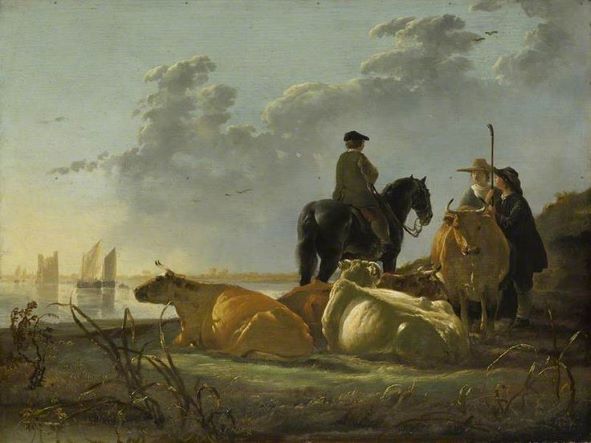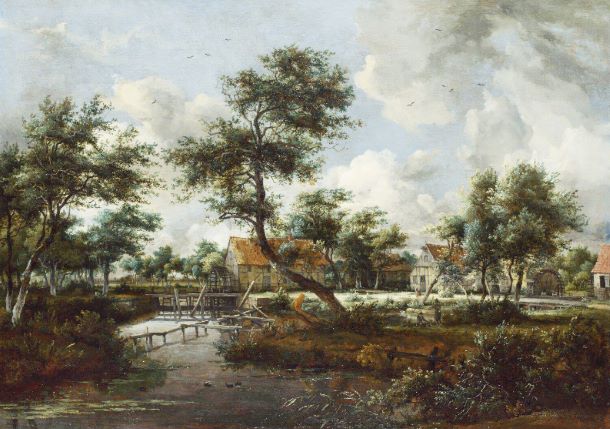
Man in nature in 17th century Netherlands
Landscape painting in the netherlands in the 17th century is fascinating for many things, but certainly one of them is the balance between man and nature. With the well-known exception of some of the work of Jacob van Ruisdael, there are almost no landscapes in which man and his artifacts do not play a significant part. This makes sense: the Netherlands had long been a fully inhabited land with few areas of true wilderness. On the other hand, it is a land of endless sweep of land and sea, dominated by a vast and everchanging sky. In such a landscape, man and his works may be present, but they are always in danger of getting lost in the vastness of their surroundings.


It is interesting to see how different artists deal with this problem of human scale in relation to the endless and distant horizon. The landscape with cattle is typical of the effort to assert man’s importance in juxtaposition to the vastness of nature. Most Dutch landscapists deal with it by building barriers against the vast distance, creating a limited foreground space where everything is measurable and in comfortable human scale. We can see this in the work by Hobbema, where the Mill and its immediate environs are sheilded by a grove of trees, through which we get an intriguing — but not overwhelming — view of the distant horizon. This is similar to the formula being developed in the south by the French Italianate painters Poussin and Claude Lorraine.
Van Goyen’s approach, though less “comfortable” for the human inhabitants, is truer to the nature of the landscape of his country. All human activity shrinks into relative insignificance beneath the arching dome of the heavens and the vast sweep of the land. We pick out the figures of inhabitants as we would notice movement in a landscape otherwise motionless. Though small in its surroundings, the windmill attracts the eye simply by breaking the line of the horizon; we cleave to it with an eye starved for meaningful detail. In the end, it has as much or more importance in the work as the nearer and larger mill in Hobbema’s work.
In the end it is the difference between two basic views of nature. In the first we are in nature as in the lap of our mother, safe and comfortable, yet able to look out at a wider world that we have yet to explore. In the second we are aware of being an infinitesimal thing within the vast scheme of nature and are chastened and awed.